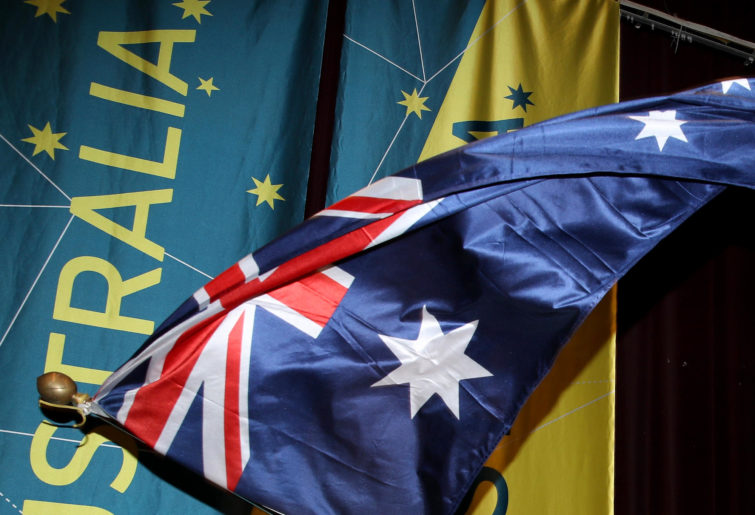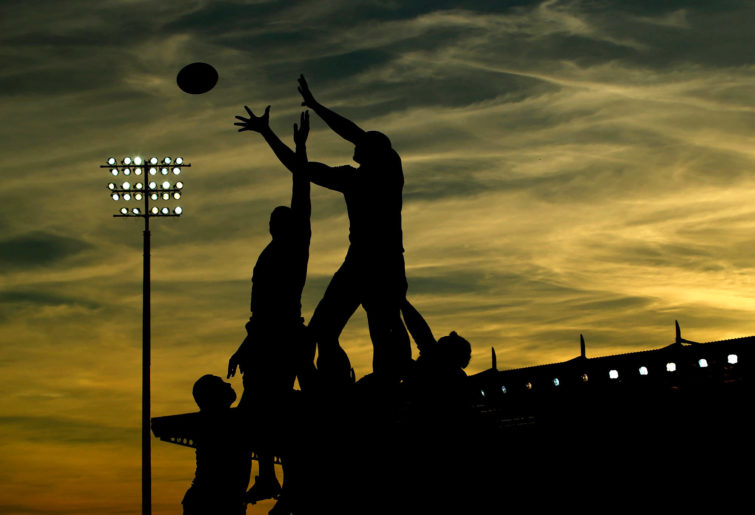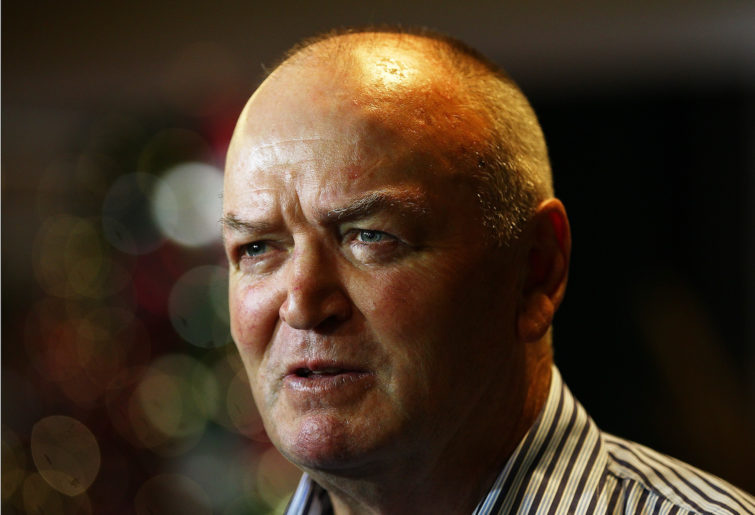George Nepia made his New Zealand debut 100 years ago, but was he really an All Black at just 16 years of age?
He was born 1905, 1904 or 1908 according to various reports, in Wairoa, Hawkes Bay, and is remembered as one of the great Māori players.
Opinion
Scottish author Samuel Smiles once said: “We learn wisdom from failure much more than from success. We often discover what will do, by finding out what will not do; and probably he who never made a mistake never made a discovery.”
In February 1996, after five years of mediocre performance, a franchise head coach was given his marching orders. He was tagged with the label ‘never again’.
In mid-1998 a very successful provincial coach left his country of birth to coach another country’s national team. So incensed was his national union that they created a rule – aptly named after him – banning any coach from coaching their national team if they had ever accepted a head coaching role for another nation.
Despite making an immediate impact in Year 1, performance waned in Year 2. He was sacked mid-way through Year 3. He was subject to an unflattering documentary and subsequent player biographies that questioned his coaching. His previous stellar reputation was forever tarnished.
At the conclusion of the 2000 Super Rugby competition, Ian ‘Speed’ Kennedy was fired after only one season as head coach of the Waratahs. He was a wonderful age group coach and came in with excellent pedigree, having won a suite of junior World Cups.
A number of years ago I was privy to some correspondence that the then-Brumbies coaching and management staff received from swim coach legend Bill Sweetenham. The previous year, with a squad of over 500 Test caps and 800 Super Rugby caps, was an abject disaster. Constant undermining and bickering led to the then-head coach Andy Friend being sacrificed and the squad – despite the experience – coming 13th out of 15 teams.
World Cup winner Jake White came in with a new coaching group and cleaned house. Only three Wallabies remained and the 2012 season began with ten debutants. Despite the inexperience, by mid-way through the season, the team looked as though it was finals bound, which is what prompted the email from Sweetenham.
The email described why in Olympic sports many world records were broken at various championships between Olympics. However, often the record holders performed well below expectations at the Olympics. He explained that at national championships and world championships, the athlete had total control over their environment. They stayed at the best hotels and meals and sleep were arranged around competition times. They usually stayed close to the competition site so everything was under control. They could essentially time their peak.

(Cameron Spencer/Getty Images)
But the Olympics were different. Athletes stayed in the village and ate at the cafeteria with set times. Competition meet times could be affected by a whole range of issues. They were in a completely different environment out of their comfort zones. The village – while comforts aren’t spared – is a dormitory-style environment, with athletes up and moving around at all hours. Sleep patterns are affected and training times upset. Athletes for whom the competition has finished early are essentially running amok until all hours of the morning, with scant care for athletes still to compete.
There are foreign logistical factors. In Atlanta, for example, it could take anywhere from ten to 40 minutes to get from the village to the stadium. Reputedly it was on this trip that Kieran Perkins knew he was going to win the 1500 metres despite only just qualifying the previous day. On the bus from the village to the stadium, he looked around at his opposition and could see the stress in their faces as their pre-race routine was about to be turned upside down by the Atlanta traffic.
Ric Charlesworth famously and purposely aimed to unsettle the routines of the Hockeyroos weekly. Buses wouldn’t be ordered for training and schedules were changed at the last minute for this very reason. He wanted his players to be both used to and prepared for the unexpected. This and other interventions made them one of the most consistently dominant teams in history.
Sweetenham, who was close with performance manager Dean Benton, sought to prompt the coaching staff into considering that the closer they got to finals, they needed to ensure that the players were prepared for the unexpected and still be able to get themselves up for a performance. Sweetenham also came in to facilitate with the team the following year and his advice was sage.
On the way to making the 2013 grand final, the team travelled over 12,000 miles across a variety of time zones in just ten days. Every one of those 12,000 miles were felt in the last 13 minutes when the Chiefs came over the top of the Brumbies to win their second Super Rugby title.
Soon after Kennedy’s removal from the Waratahs in 2001, I recall that an article was written in one of Australia’s leading newspapers by then-Penrith head coach and reigning Shute Shield coach of the year Scott Johnson, the current Wallabies director of rugby. In the article he spoke about not selecting the next Super Rugby head coach from the annals of elite age group rugby.

(Photo by Atsushi Tomura/Getty Images)
Johnson, in the article, articulated that in age group rugby, you have the best athletes for short periods of time. Further, because it’s a camp environment, it can be controlled. When you go to championships, again, hotels and meals are controlled. Further, it’s four or five games over a four-week period. Culture development, training and review times are formulaic and you have a highly motivated group of athletes with short and achievable goals in place.
He stated that it’s not a realistic preparation for the weekly grind of Super Rugby, where curve balls are thrown at you all the time.
Johnson further argued that being a head coach in club rugby provided better preparation. He proposed that a club coach could prepare for training only to have it altered at the last minute because Player X’s only surviving grandmother was having her third birthday for the year, or having to counsel Player Y because their relationship broke down. Player Z has lost their job and needs another.
The club head coach was forced out of their comfort zone constantly, continually adjusting, responding, and dealing with a multitude of situations that aren’t just games and on-field coaching. He proposed this was more contextual than a strictly controlled and short-term environment that epitomised age group representative campaigns.
He also pointed out that the best coach outside of Super Rugby at the time was then Tuggeranong Vikings head coach Chris Hickey.
Hickey won a huge number of premierships across multiple competitions and was the Waratahs’ winningest head coach at 68 per cent between 2009 and 2011.
That spoke to Sweetenham’s point, that short-term representative coaching is similar to pre-Olympic competition, controlled with limited unforeseen circumstances arising, but unfortunately missing key contextual learning experiences that transfer to the grind of week in, week out elite professional coaching.
We’ve also seen this since. Aside from Kennedy in 2001, Phil Mooney was head coach at the Reds between 2008 and 2009. Mooney won the under-19s World Cup in 2006. He was also academy coach and an assistant coach at the Reds for many years. Don’t get me wrong, Mooney is a good man and a good coach like Kennedy.
But the head coach role isn’t just coaching and even moving from assistant to head coach, the roles are significantly different.
I was fortunate a number of years ago to work closely with Australia’s only professor of sport coaching, Dr Cliff Mallett. Mallett was himself an Olympic sprint coach and was coach of Australia’s 4×400-metre men’s silver medal relay team in 2004 – Australia’s first relay track medal in over 50 years.
An expert on motivation, Mallett over the years has been commissioned by a number of sporting organisations – including the AFL and IAAF – to identify what a coach’s work actually is. One of the key things that consistently emerges from this research is how inadequate accreditation and formal coach development programs are at preparing coaches for the work they actually undertake. The other findings that consistently came through was how different each role was, with contrasting requirements and responsibilities.
A key example was provided by then-Waratahs head coach Ewen McKenzie in 2006. Ironically he was the first coach that could clearly articulate his role. It was also interesting how his previous career as a town planner contributed both to the role and his development.

(Photo by Richard Heathcote – World Rugby via Getty Images)
McKenzie specifically broke the role down into four key buckets:
• Stakeholder management
• Financial control, managing a budget of around $5 million
• Staff management and development
• Team vision and dynamics
His on-field coaching role was limited and largely undertaken at his direction by his assistants. He also stated that in the first year he ran largely a Wallabies-centric program but realised quickly that the program needed to fit the environment, which is where his town planning skills came to the fore.
Some 18 months later, he was also moved on despite making the finals three times and the grand final twice. His next role as head coach at Stade Francais also ended with his removal before being appointed Phil Mooney’s successor at Ballymore in late 2009.
I was lucky enough to be able to conduct a diagnostic interview with McKenzie on behalf of a mate of mine just after this. My mate was completing a PhD that utilised a business model to view world-class organisations through. While the interview went for almost two hours, we recorded snippets as part of marketing for coaching courses that we were running in partnership with the QRU.
It’s clear, even from this short piece, why the Reds lifted the Super Rugby trophy only 18 months after. What is also clear is how all of the roles he had previously occupied provided the necessary experience and work-place learning to be successful, regardless of whether the roles were deemed by others as successful or not.
It’s a sad reality that a person with the experience and expertise of McKenzie is lost to Australian rugby.
Back to the two coaches. The first coach went back to being an assistant coach for four years before getting another opportunity as a head coach. While controversial, he has since gone on to become the most successful head coach in NFL history: Bill Belichick.
The second coach returned to his country of birth and was offered a technical coach role in a competition below that of where he was initially successful.

(Photo by Hannah Peters/Getty Images)
The team won that competition. He then occupied the same technical role in the competition above. The team won that as well.
Six months later, after the All Blacks fell to Australia in the semi-final of the 2003 World Cup, the New Zealand Rugby Union reversed the rule known as the ‘Henry rule’ and appointed Graham Henry head coach of the All Blacks.
Interestingly he stated that his national role with Wales actually taught him how to be a better coach.
There are very few professional coaches in World Rugby that haven’t at some point either been sacked for what was perceived as a failed program.
There are many factors that contribute to this. Environment is a big one and we’ve seen coaches be successful in one environment, but not others.
It’s clear current coach development methodology and programs are inadequate in preparing coaches for elite roles, leaving workplace learning as the only option.
With two roles available in Australian rugby, there are a number of quality Australian coaches that have plenty of contextual experience, some even already as head coaches or directors of rugby in Super Rugby, European Cup, Japanese Top League and MLR in the US.
Selection panels need to look past whether there is a perception that they may have failed in certain roles and look deeper at the story behind success and failure.
What have they learned from that and what can they bring to the next role?